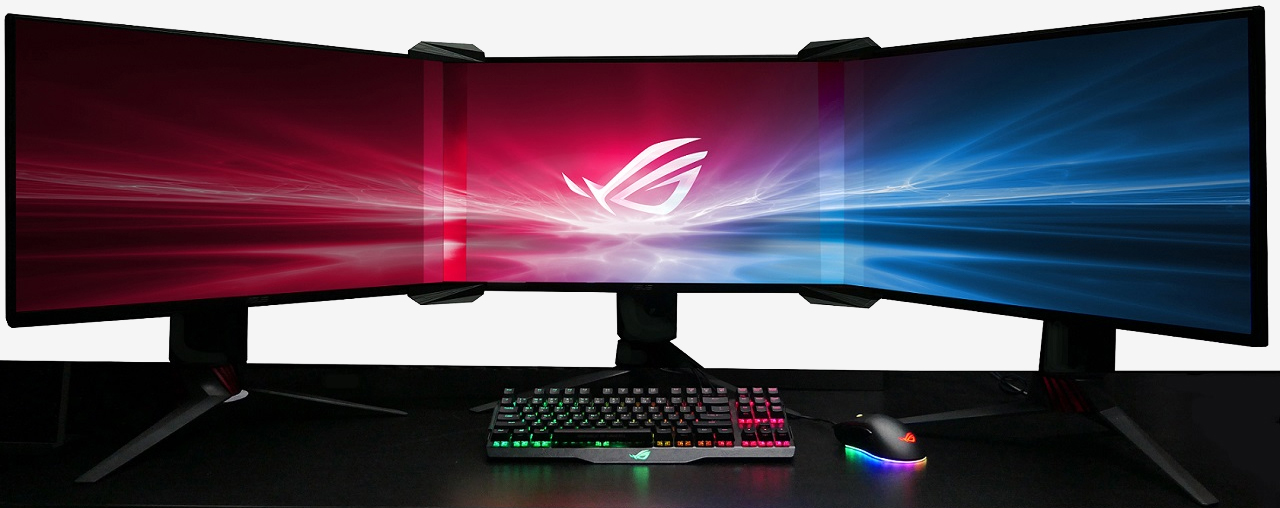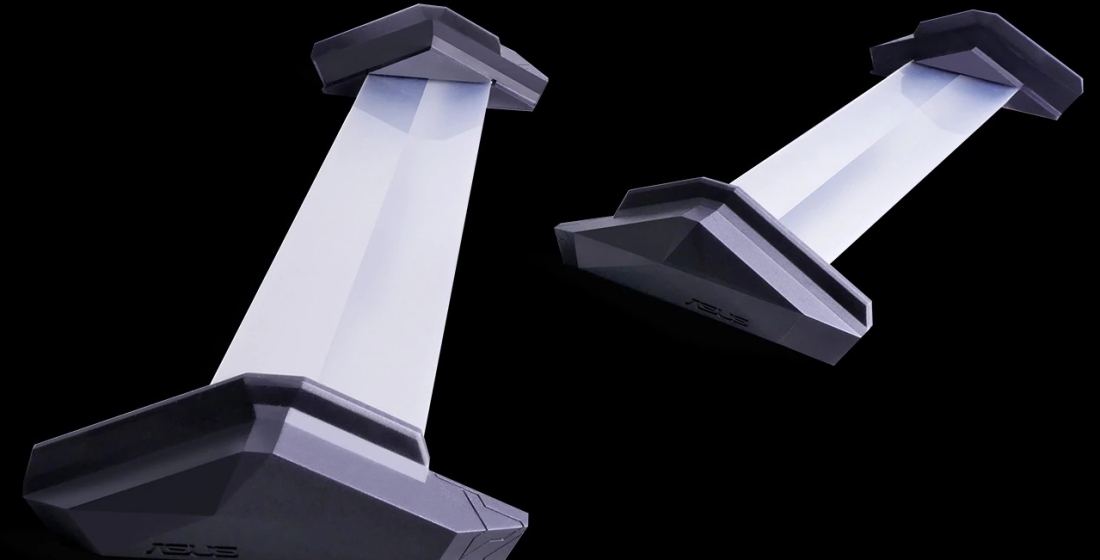
I’ve long been a proponent of multi-monitor setups due to the productivity implications. In my line of work, being able to have several windows open and visible at once is invaluable.
Operating multiple screens isn’t a flawless solution, however, as you still have to contend with ugly screen bezels. Advancements in technology over the years have slimmed bezels down considerably but Asus’ latest product looks to eliminate the eyesore entirely.
The Asus ROG Bezel-Free Monitor Kit uses thin lenses constructed of PMMA, a type of transparent thermoplastic that is much more durable than glass. The lenses, which contain optical micro-structures that reflect light, are placed along the seams where screens meet and bend the light to create an “optical camouflage” that hides the bezels underneath.
Asus says the material lets 90 percent of light from the monitors shine through. This makes the picture under the lenses slightly dimmer than the rest of the screen but less distracting than the opaque seams created when two bezels are pushed up against each other. Using glass lenses would reduce the dimming but according to Asus, they’d then be too fragile for mass production (and probably much more expensive).

The kit on display at CES fits the ROG Swift PG258Q and Strix XG258Q but the concept can be adapted to work with other displays, we’re told. It has been designed to work at an angle of 130 degrees which offered the best balance of conform and immersion during testing.
Asus certainly has an intriguing concept on its hands and one that solves a real problem. The fact that it’s an optical solution is nice as it won’t require any additional wires or software. What’s more, if it could easily be adapted to non-Asus monitors, it’d be even more attractive. Then again, this is a very niche product that may never make it past the concept phase.
Ultimately, it’ll all come down to how the effect looks in person. Or, you could simply ditch that multi-monitor setup and go with a single, large-screen 4K television to use as your desktop monitor.